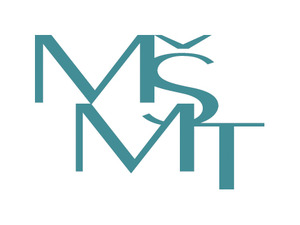Committee
More...
HISTORY OF COOPERATION
The Joint Institute for Nuclear Research (JINR) is an international intergovernmental scientific research organisation founded 26.03. 1956 by 12 countries of Central and Eastern Europa.
In 1947 a group led by I.V. Kurchatov initiated the construction of charged particle accelerator (680 MeV synchrocyclotron). It was decided that it will be built on the banks of the Volga river - 120 km north of Moscow. The accelerator was completed in 1949 and became the basic facility of the Institute of Nuclear Problems (INP), headed by physicists and M.G. Meshcherjakov and V.P. Dzhelepov. As another institute was established in Dubna Electro-physical Laboratory of the Academy of Sciences of the USSR (EFLAN) led by V.I. Veksler.
In 1954, near Geneva, the European Organization for Nuclear Research (CERN) was established, which unified the efforts of countries in Western Europe towards the study of the fundamental properties of microworld.
In response to the creation of CERN the countries of Central and Eastern Europe founded JINR, which was based on INP and EFLAN institutions already existing in Dubna.
Czechoslovakia was among the founding members of JINR. Czechoslovakia has always had an important position in the JINR, as evidenced by the appointment of a prominent Czechoslovak scientists into management positions, e.g. deputy director of JINR gradually became prof. V. Votruba, prof. I. Úlehla, prof. Č. Šimáně and dr. M. Gmitro or the deputy head of the laboratories became Prof. V. Petržílka, dr. J. Perneger and others.
In 1947 a group led by I.V. Kurchatov initiated the construction of charged particle accelerator (680 MeV synchrocyclotron). It was decided that it will be built on the banks of the Volga river - 120 km north of Moscow. The accelerator was completed in 1949 and became the basic facility of the Institute of Nuclear Problems (INP), headed by physicists and M.G. Meshcherjakov and V.P. Dzhelepov. As another institute was established in Dubna Electro-physical Laboratory of the Academy of Sciences of the USSR (EFLAN) led by V.I. Veksler.
In 1954, near Geneva, the European Organization for Nuclear Research (CERN) was established, which unified the efforts of countries in Western Europe towards the study of the fundamental properties of microworld.
In response to the creation of CERN the countries of Central and Eastern Europe founded JINR, which was based on INP and EFLAN institutions already existing in Dubna.
Czechoslovakia was among the founding members of JINR. Czechoslovakia has always had an important position in the JINR, as evidenced by the appointment of a prominent Czechoslovak scientists into management positions, e.g. deputy director of JINR gradually became prof. V. Votruba, prof. I. Úlehla, prof. Č. Šimáně and dr. M. Gmitro or the deputy head of the laboratories became Prof. V. Petržílka, dr. J. Perneger and others.
Publications
More...
Interpolating formula for the 0 nu beta beta-decay half-life in the case of light and heavy neutrino mass mechanisms
We revisit the "interpolating formula" proposed in our previous publication. It allows one to calculate the 0 nu beta beta-decay half-life for arbitrary neutrino mass without the involvement of the complicated results for nuclear matrix elements (NMEs)
JINR in the media
More...
Institute in Dubna, Russia, will employ also Czech companies
(Česká televize - 29.3.2012)
Summer internship at the Institute for Nuclear Research in Dubna
(3pól - 13.4.2012)
The expedition to the island of stability.
Interview with the director of JINR V.A. Matveev - Part 1
(Respekt - 10.9.2012)
The expedition to the island of stability.
Interview with the director of JINR V.A. Matveev - Part 2
(Respekt - 13.9.2012)
About the research in the Joint Institute for Nuclear Research Dubna
(Atom Info - 5.8.2013)
(Česká televize - 29.3.2012)
Summer internship at the Institute for Nuclear Research in Dubna
(3pól - 13.4.2012)
The expedition to the island of stability.
Interview with the director of JINR V.A. Matveev - Part 1
(Respekt - 10.9.2012)
The expedition to the island of stability.
Interview with the director of JINR V.A. Matveev - Part 2
(Respekt - 13.9.2012)
About the research in the Joint Institute for Nuclear Research Dubna
(Atom Info - 5.8.2013)



